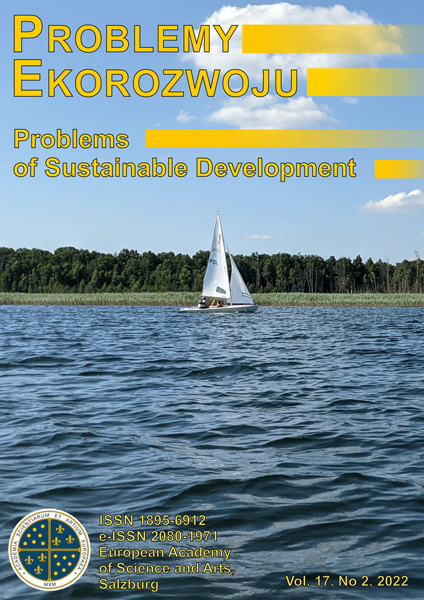ALESINA A., ARDAGNA S., 2010, Large changes in fiscal policy: taxes versus spending, Tax policy and the economy, 24(1): 35-68.
DOI: https://doi.org/10.1086/649828
ARNOLD J. M., BRYS B., HEADY C., JOHANSSON Å., SCHWELLNUS C., VARTIA L., 2011, Tax policy for economic recovery and growth, The Economic Journal, 121(550): F59-F80, https://doi.org/10.1111/j.1468-0297.2010.02415.x.
DOI: https://doi.org/10.1111/j.1468-0297.2010.02415.x
BAIRADI D., PROFETA P., PUGLISHI R., SCABROSETTI S., 2019, Tax policy and economic growth: does it really matter?, International tax and public finance, 26(2): 282-316.
DOI: https://doi.org/10.1007/s10797-018-9494-3
BARBIER E. B., 2020, Greening the post-pandemic recovery in the G20, Environmental and Resource Economics, 76(4):685-703, https://doi.org/10.1007/s10640-020-00437-w.
DOI: https://doi.org/10.1007/s10640-020-00437-w
BARRO R. J., SALA-i-MARTIN X., 1995, Technolgical Diffusion Convergence and Growth, NBER Working Papers, 5151, National Bureau of Economic Research.
DOI: https://doi.org/10.3386/w5151
BERNARDI L., 2013, Recent findings regarding the shift from direct to indirect taxation in the EA-17, Rivista di diritto finanziario e scienza delle finanze, 4: 233-256.
BENOS N., 2009, Fiscal policy and economic growth: empirical evidence from EU countries, MPRA Paper, 19174, University Library of Munich, Germany.
CASADO M. G., GLENNON B., LANE J., MCQUOWN D., RICH D., WEINBERG B. A., 2020, The aggregate effects of fiscal stimulus: Evidence from the Covid-19 unemployment supplement (No. w27576), National Bureau of Economic Research.
DOI: https://doi.org/10.3386/w27576
CHEN S., IGAN D. O., PIERRI N., PRESBITERO A. F., SOLEDAD M., PERIA M., 2020, Tracking the economic impact of COVID-19 and mitigation policies in Europe and the United States, IMF Working Papers, 125.
DOI: https://doi.org/10.5089/9781513549644.001
CHUGUNOV I., PASICHNYJ, M., KOROVIY V., KANEVA T., NIKITISHIN A., 2021, Fiscal and Monetary Policy of Economic Development, European Journal of Sustainable Development, 10(1): 42-52, https://doi.org/10.14207/ejsd.2021.v10n1p42.
DOI: https://doi.org/10.14207/ejsd.2021.v10n1p42
DEMERTZIS M., SAPIR A., TAGLIAPIETRA S., WOLFF G. B., 2020, An effective economic response to the coronavirus in Europe, 2020/06, Bruegel Policy Contribution.
ENGEN E. M., SKINNER J., 1992, Fiscal policy and economic growth, w4223, National Bureau of Economic Research.
DOI: https://doi.org/10.3386/w4223
EASTERLY W., LEVIENE R., 2016, The European origins of economic development. Journal of Economic Growth, 21(3): 225-257.
DOI: https://doi.org/10.1007/s10887-016-9130-y
FAIA E., LECHTAHLER W., MERKL C., 2013, Fiscal stimulus and labor market policies in Europe, Journal of Economic Dynamics and Control, 37(3): 483-499.
DOI: https://doi.org/10.1016/j.jedc.2012.09.004
GHAZINOORY S., HASHEMI Z., 2021, Do tax incentives and direct funding enhance innovation input and output in high-tech firms?, The Journal of High Technology Management Research, 32(1): 100394, https://doi.org/10.1016/j.Hitech.2020.100394.
DOI: https://doi.org/10.1016/j.hitech.2020.100394
KAWA P., WAJDA-LICHY M., FIJOREK K., DENKOWSKA S., 2020, Do finance and trade foster economic growth in the new EU member states: Granger panel bootstrap causality approach, Eastern European Economics, 58(6): 458-477, https://doi.org/10.1080/00128775.2020.1762497.
DOI: https://doi.org/10.1080/00128775.2020.1762497
KRAJEWSKI P., MACKIEWICZ M., 2019, The role of capital and labour in shaping the environmental effects of fiscal stimulus, Journal of Cleaner Production, 216: 323-332, https://doi.org/10.1016/j.jclepro.2019.01.190.
DOI: https://doi.org/10.1016/j.jclepro.2019.01.190
MOUNTFORD A., Uhlig, H. (2009). What are the effects of fiscal policy shocks?. Journal of applied econometrics, 24(6):960-992.
DOI: https://doi.org/10.1002/jae.1079
MCNABB K., 2018, Tax structures and economic growth: new evidence from the government revenue dataset, Journal of International Development, 30(2): 173-205.
DOI: https://doi.org/10.1002/jid.3345
OJEDE A., YAMARIK S., 2012, Tax policy and state economic growth: The long-run and short-run of it, Economics Letters, 116(2): 161-165, https://doi.org/10.1016/j.econlet.2012.02.023.
DOI: https://doi.org/10.1016/j.econlet.2012.02.023
OHRN E., 2019, The effect of tax incentives on US manufacturing: Evidence from state accelerated depreciation policies, Journal of Public Economics, 180: 104084, https://doi.org/10.1016/j.jpubeco.2019.104084.
DOI: https://doi.org/10.1016/j.jpubeco.2019.104084
PASICHNYI M., 2017, Empirical study of the fiscal policy impact on economic growth, Problems and Perspectives in Management, 15(3): 316-322, https://doi.org/10.21511/ppm.15(3-2).2017.01.
DOI: https://doi.org/10.21511/ppm.15(3-2).2017.01
PASICHNYI M., NEPTYALIUK A., 2021, The Contributions of Demographic Factors to Economic Growth, Problemy Ekorozwoju/ Problems of Sustainable Development, 16(1): 219-229, https://doi.org/10.35784/pe.2021.1.24.
DOI: https://doi.org/10.35784/pe.2021.1.24
PESTEL N., SOMMER E., 2017, Shifting taxes from labor to consumption: More employment and more inequality?, Review of Income and Wealth, 63(3): 542-563.
DOI: https://doi.org/10.1111/roiw.12232
ROMER C. D., ROMER D. H., 2010, The macroeconomic effects of tax changes: estimates based on a new measure of fiscal shocks, American Economic Review, 100(3): 763-801.
DOI: https://doi.org/10.1257/aer.100.3.763
SHULLA K., VOIGT B. F., CIBIAN S., SSANDONE G., MMARTINEZ E., NELKOVSKI F., SALEHI P., 2021, Effects of COVID-19 on the sustainable development goals (SDGs), Discover Sustainability, 2(1): 1-19, https://doi.org/10.1007/s43621-021-00026-x.
DOI: https://doi.org/10.1007/s43621-021-00026-x
TANZI V., 1969, Tax incentives and economic development: the Ecuadorian experience, FinanzArchiv/ Public Finance Analysis, H. 2: 226-235.
STOILOVA D., 2017, Tax structure and economic growth: Evidence from the European Union, Contaduría y Administración, 62(3): 1041-1057.
DOI: https://doi.org/10.1016/j.cya.2017.04.006
VEGH C. A., VULETIN G., 2015, How is tax policy conducted over the business cycle?, American Economic Journal: Economic Policy, 7(3): 327-370.
DOI: https://doi.org/10.1257/pol.20120218
WANG S. L., 2021, Fiscal stimulus in a high-debt economy? A DSGE analysis, Economic Modelling, 98: 118-135, https://doi.org/10.1016/j.econmod.2021.02.009.
DOI: https://doi.org/10.1016/j.econmod.2021.02.009







